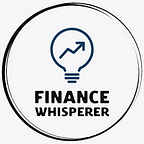An emergency fund is a critical component of any solid personal finance plan. It provides a financial safety net during unexpected events, such as job loss, medical emergencies, or urgent home repairs. In this article, we’ll explain the importance of having an emergency fund and provide practical tips for building one that suits your needs.
The importance of an emergency fund
An emergency fund offers several benefits:
- Financial security: It provides a buffer against unexpected expenses, helping you avoid high-interest debt.
- Peace of mind: Knowing you have a financial cushion can reduce stress during emergencies.
- Flexibility: With an emergency fund, you can handle unexpected expenses without disrupting your regular budget or financial goals.
1. Determine the size of your emergency fund
The ideal size of an emergency fund varies depending on your financial situation and lifestyle. Most experts recommend having three to six months’ worth of living expenses in your emergency fund. Factors to consider when determining the size of your fund include:
- Your job stability
- The number of income earners in your household
- Your monthly expenses and financial obligations
- The availability of other financial resources, such as investments or insurance coverage
2. Choose the right account for your emergency fund
Your emergency fund should be easily accessible and separate from your regular checking or savings account. Consider placing your fund in a high-yield savings account, money market account, or a short-term certificate of deposit (CD) to earn interest while maintaining liquidity.
3. Start small and build gradually
Building an emergency fund may seem overwhelming, but starting small and building gradually can make the process more manageable. Begin by setting aside a small amount each month, such as $50 or $100, and increase your contributions as your financial situation allows. Consider automating your savings by setting up a recurring transfer from your checking account to your emergency fund.
4. Use windfalls to boost your fund
Unexpected windfalls, such as tax refunds, work bonuses, or monetary gifts, can be an excellent opportunity to bolster your emergency fund. By allocating a portion of these windfalls to your fund, you can accelerate your progress without impacting your regular budget.
5. Resist the urge to dip into your fund
Treat your emergency fund as a last resort, to be used only for genuine emergencies. Avoid dipping into the fund for non-essential expenses or impulse purchases, as this can undermine your financial security.
6. Replenish your fund after use
If you need to use your emergency fund, make it a priority to replenish the balance as soon as possible. This ensures your financial safety net remains intact for future emergencies.
An emergency fund is an essential part of any personal finance plan, providing financial security and peace of mind during unexpected events. By determining the right size for your fund, choosing the appropriate account, and gradually building your savings, you can create a solid financial safety net tailored to your unique needs. Remember, consistency and discipline are key to successfully building and maintaining an emergency fund that will serve you well in times of need.
Disclaimer: The information provided in this article is for general informational and educational purposes only and should not be construed as professional financial advice. It does not take into account your specific circumstances, objectives, or financial situation. Before making any financial decisions, you should consult with a qualified financial advisor who can provide personalized advice based on your individual needs and circumstances. The author and publisher of this article disclaim any liability arising from the use of the information provided herein.
The structure and content of this article were expertly craft with the assistance of GPT-4 technology.
